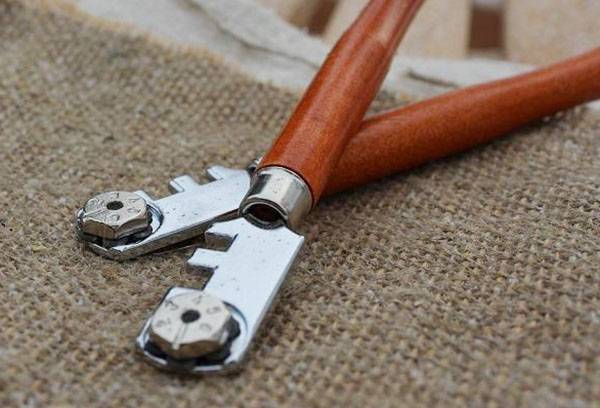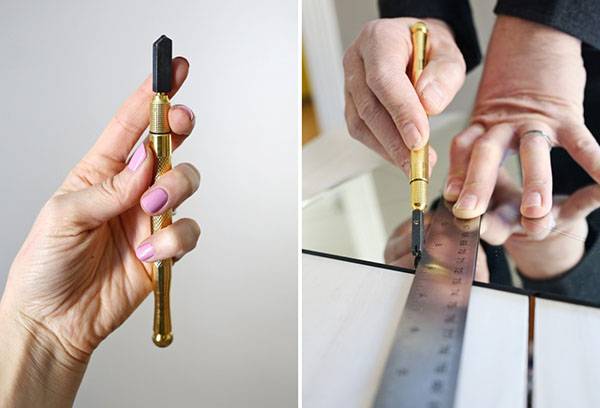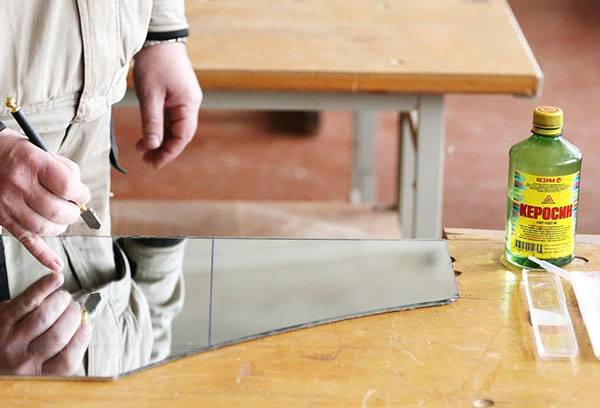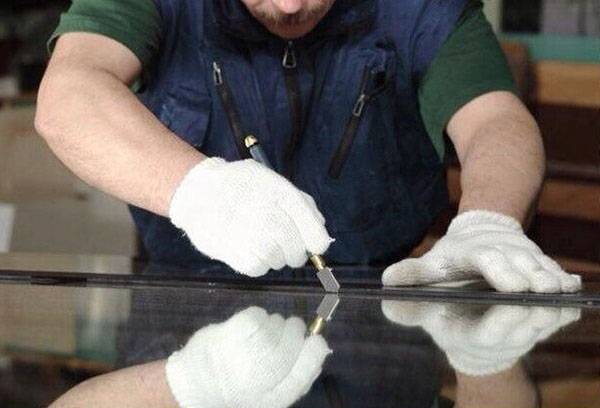How to cut a mirror yourself if you are not a glazier?
Content:
Mirrors in the interior are needed not only to look in them. To create various optical illusions, reflective surfaces can be placed in blocks on the walls, under the ceiling, near wall lamps, and even play the role of kitchen aprons. But here's the misfortune: not everyone can afford to hire a team of professionals for design repair now. Therefore, home masters have a logical question: what to do when you need to cut the mirror yourself? The author of the site purityis.decorexpro.com/en/ figured out this issue.
What to cook for work?
Before you start cutting a mirror for your home interior, it is important to make sure that everything you need is at hand. These are tools, accessories, items for cleaning up after oneself, as well as for observing safety precautions, because when working with glass, care should be in the first place.
For work you will need:
- the mirror itself;
- glass cutter;
- smooth smooth surface (wide table or a large chipboard plate);
- long thick ruler (about 8 mm thick);
- cloth (for example, a sheet or an old tablecloth);
- pliers with rubber pads;
- small hammer;
- roulette;
- fine emery;
- a bowl or basin of water;
- rag;
- soda and alcohol;
- pencil, crayon or marker for marking glass.
For the safety of hands and eyes, you need to prepare:
- tight fabric gloves (so as not to cut your fingers);
- patch for extra finger protection;
- safety glasses (construction, bicycle or any other).
Which glass cutter to work?
For the layman there is no difference what kind of glass cutters are, therefore, most often they buy “cheaper” ones. However, this is not always justified.
To trim the mirror, you can use different types of glass cutters. The most popular are roller and diamond. The second one is much more expensive, but working with it is much easier, less effort is needed, the quality of the cuts will be much higher, and the amount of scrap and waste less.
It is optimal, of course, to cut the mirror with a diamond glass cutter. Especially if the work is planned to be sufficiently thin and accurate or a large volume is to be performed. A diamond nose is inserted into the frame of such a glass cutter (hence the name), which has sharp and obtuse angles. During the cutting process, it is important to move an acute angle forward, then the tool will go along the surface freely, without “tripping” over the smallest surface irregularities. If you cut it with an obtuse angle, the grain of the glass cutter will either jump out of its nest or "go off course." In order to maintain the same tilt angle of the tool during operation, it is important to always point the mark that is on the frame of the glass cutter to the ruler.
A glass cutter is more difficult to hold the line, and to get a quality cut you need to put a lot more effort. In order to facilitate the sliding of such a tool on the surface, the line of the future cut can be greased with turpentine, using, for example, a student’s brush for drawing.
Tip
Before you start cutting critical, “finishing” sections of the mirror, train yourself well to do this on unnecessary pieces of glass. Then the hand will be firmer, and the lines will be smoother.
What you need to know before cutting?
In order not to spoil the mirror, especially in the absence of experience with a glass cutter, you should study the general rules for such work, and then the process itself should be phased.
So, what you need to know before you pick up a mirror and a glass cutter?
- It is important to keep the tool at a right angle. Only a slight deviation is allowed.
- The angle of inclination must not be changed! Otherwise, then it will not be possible to smoothly and accurately separate the cut off parts.
- The incision should be made in one precise, continuous, sharp movement.
- The pressing force cannot be changed, except for the edges: approximately 5 mm to the edge, the pressure is weakened so that the tool does not slip and chips are not formed.
- Always cut from the far edge to yourself.
- Always cut on the front side (not where the amalgam is applied).
- A thin whitish trace when working with a glass cutter means that the cut was not deep enough. The correct incision is dark in color.
- Diamond tools always leave a white mark.
- You need to cut the mirror under the ruler of large thickness. To prevent it from sliding on the surface, pieces of rubber are attached to its base (for example, from a bicycle tire).
Tip
Do not try to deepen the incision that has not turned out. It will not work to get a trace into the track along the entire length, and repeated movements will only damage the mirror, and it will have to be thrown out (or cut off a smaller part). That is why it is previously important to train “on cats” in the form of old glasses.
Work execution technology
At first glance, the work seems daunting. But if you perform it in the prescribed sequence, observing accuracy and precautions, the result will please.
Mirror cutting is carried out as follows.
- It is necessary to lay a cloth on the working surface to protect the mirror when pressed.
- Clean the surface of the mirror first with a solution of soda, then with alcohol. Otherwise, particles of fat (for example, in places of fingerprints) or dust will lead to the displacement of the glass cutter, especially if it is roller.
- Draw a marking line. It should correspond to the line of motion of the glass cutter (that is, in fact, be at a distance of about 2 mm from the true position of the future cut).
- A carver without experience should make sure that his tool is perfectly sharp, otherwise the probability of failure is high.
- Next, you need to make the incision itself - according to the rules described above.
- Now you need to put the mirror so that the notch protrudes slightly beyond the edges of the table, press it with one hand, and with the other, with one sharp movement down, break off the cut part (you need to break it in the opposite direction from the notch).
- If the “trick” is unsuccessful, a hammer will help, which you need to carefully tap the cut line from below, starting from the far edge, and then repeat breaking off.
- If the width of the cut section is small and not enough to fully grab a piece with your hand and break it off, you can use the grooves of the glass cutter itself and grab the desired section with it. Or pick up pliers with rubber pads. If there are none in the household, you can put rubber tubes on the lips of ordinary pliers or wrap several layers of electrical tape or plaster.
- The resulting slices must be carefully sanded with sandpaper.
Following the tips above, even an inexperienced novice can cut a mirror with a glass cutter. The main thing is to be careful and patient.



